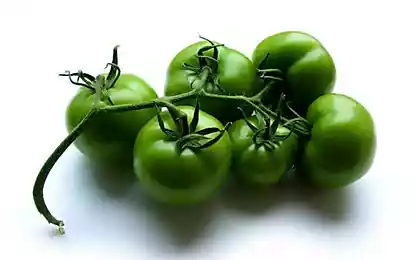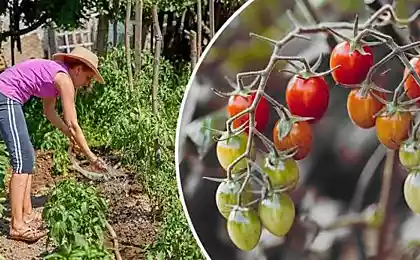209
Inexperienced summer residents make this mistake 90% of the time, don’t do it when planting tomatoes.
Tomatoes are grown from seedlings. Therefore, gardeners independently sow seeds in greenhouses and on the windowsill or buy seedlings grown by specialists. Then it is planted in the garden, and many summer residents produce regular post-planting. Especially they try to moisten the soil under the seedlings in the first 2 weeks, and as a result they notice that excellent-looking plants continue to grow reluctantly and begin to wither.

Gardeners actively try to help tomatoes and involuntarily make the same mistake. Too frequent and abundant watering of tomatoes after planting seedlings in open ground can adversely affect not only the rapid rooting and proper development of plants, but also adversely affect the quality of their fruiting in the future.
Watering tomatoes after planting When watering tomatoes after landing, follow the rules.

The next day after irrigation, the soil is recommended to loosen slightly to avoid cracking the dried crust and drying the soil: the formed deep cracks will contribute to too rapid evaporation of moisture and can damage the lateral surface roots. After pricking, you need to water the tomatoes at some distance from the bush so that moisture gets to the lateral roots of the plants. During the flowering period, tomatoes are watered once a week, but the amount of water is increased to 5 liters per bush. With a lack of moisture, the ovary formed on tomatoes can crumble.
If the lower leaves on tomatoes begin to wilt and fold, this means that the plants need emergency watering. During fruiting, tomatoes are not recommended to be watered too abundantly. From excess moisture, fruits can be covered with cracks and begin to rot.
Due to excessive moisture, tomatoes are more susceptible to various diseases. Tomatoes may have phytofluorosis, root rot, dry and white spotting, brown rot or other fungal disease. But many problems can be solved by immediate intervention and treatment of bushes with appropriate drugs.

Gardeners actively try to help tomatoes and involuntarily make the same mistake. Too frequent and abundant watering of tomatoes after planting seedlings in open ground can adversely affect not only the rapid rooting and proper development of plants, but also adversely affect the quality of their fruiting in the future.
Watering tomatoes after planting When watering tomatoes after landing, follow the rules.
- Plant seedlings of tomatoes should be in a well-moisturized hole, and after that with watering you can wait a week or two. And already on the third day after planting seedlings, tomatoes must begin to prick as the bush grows to ensure the development of lateral roots.

- It is necessary to monitor weather conditions and general soil moisture. Sandy soil retains moisture much worse, and such a bed must be watered more often. If there is an abnormal heat for a long time, then seedlings will have to be watered every two days. But the top layer of soil in the bed should not be constantly wet.
- After successful rooting in the absence of rain, tomatoes are irrigated once a week, pouring at least 1 liter of water under each bush. During the first watering, it is recommended to simultaneously prevent phytophthora. For 10 liters of water, it is advised to add 2 g of potassium permanganate (permanganate).

- Water tomatoes should be settled and heated water: these are heat-loving plants, and cold water can not be used. It is recommended to moisten the soil closer to the evening or early in the morning to promote the safe absorption of liquid with the earth and prevent excessive premature evaporation. Thus, plants can successfully absorb the optimal amount of moisture necessary for active development and growth.

The next day after irrigation, the soil is recommended to loosen slightly to avoid cracking the dried crust and drying the soil: the formed deep cracks will contribute to too rapid evaporation of moisture and can damage the lateral surface roots. After pricking, you need to water the tomatoes at some distance from the bush so that moisture gets to the lateral roots of the plants. During the flowering period, tomatoes are watered once a week, but the amount of water is increased to 5 liters per bush. With a lack of moisture, the ovary formed on tomatoes can crumble.

If the lower leaves on tomatoes begin to wilt and fold, this means that the plants need emergency watering. During fruiting, tomatoes are not recommended to be watered too abundantly. From excess moisture, fruits can be covered with cracks and begin to rot.

Due to excessive moisture, tomatoes are more susceptible to various diseases. Tomatoes may have phytofluorosis, root rot, dry and white spotting, brown rot or other fungal disease. But many problems can be solved by immediate intervention and treatment of bushes with appropriate drugs.
I do not throw away clamps from bread bags, carefully store and actively use them in everyday life.
Legendary singer Tina Turner went to heaven, the eternal memory of a great woman






















